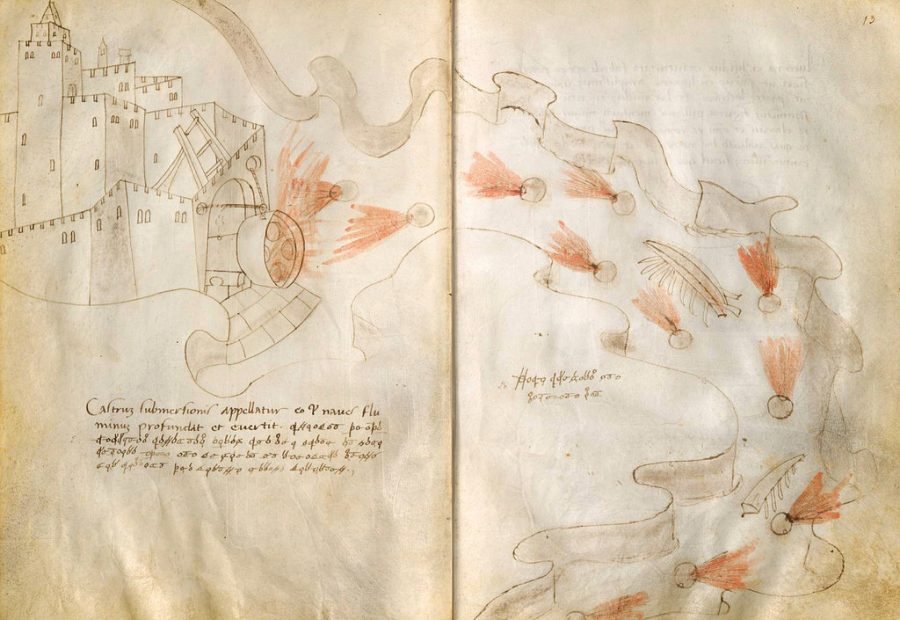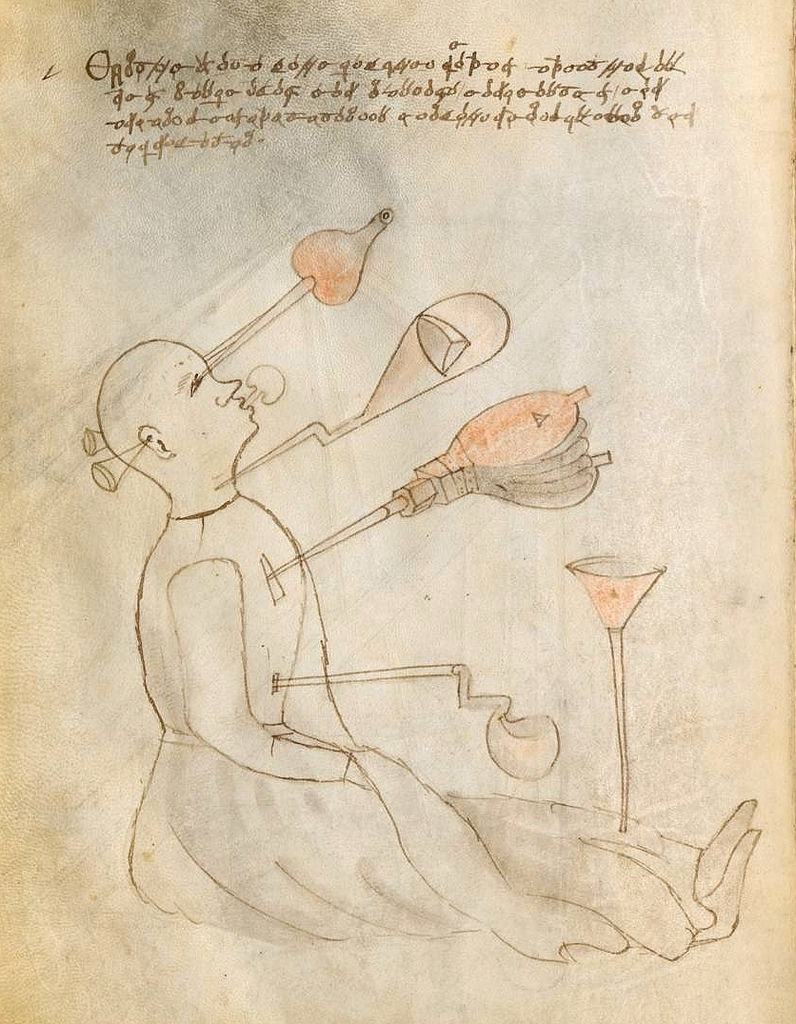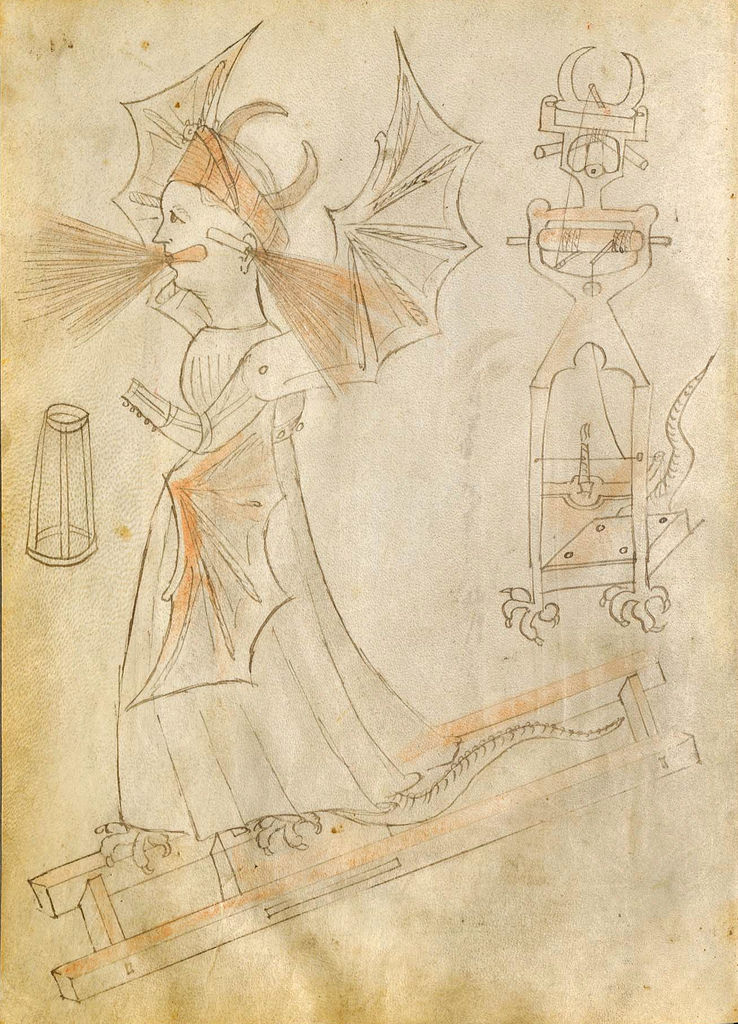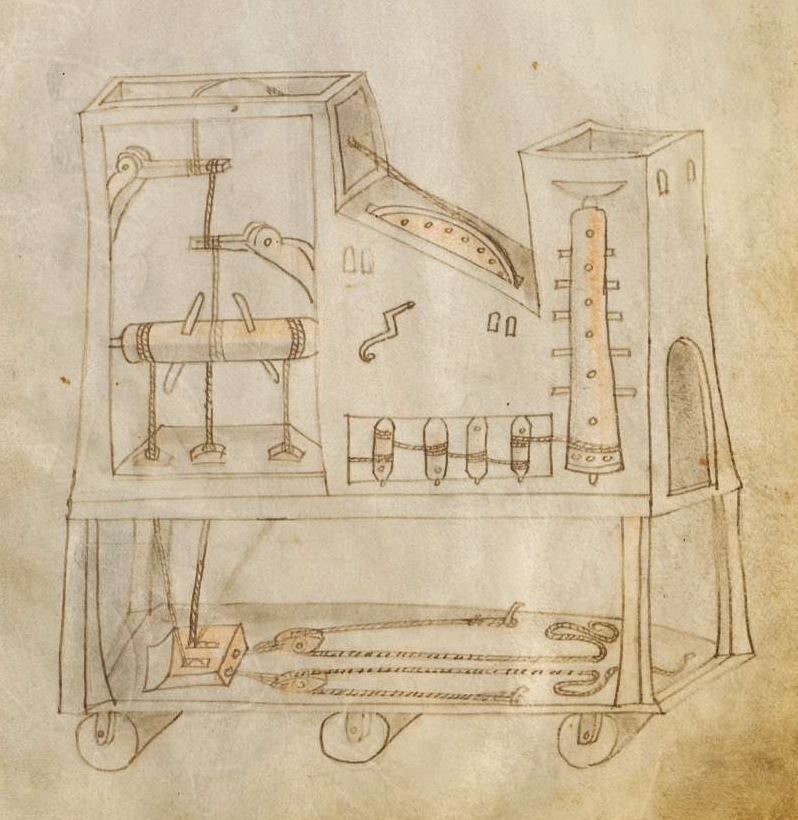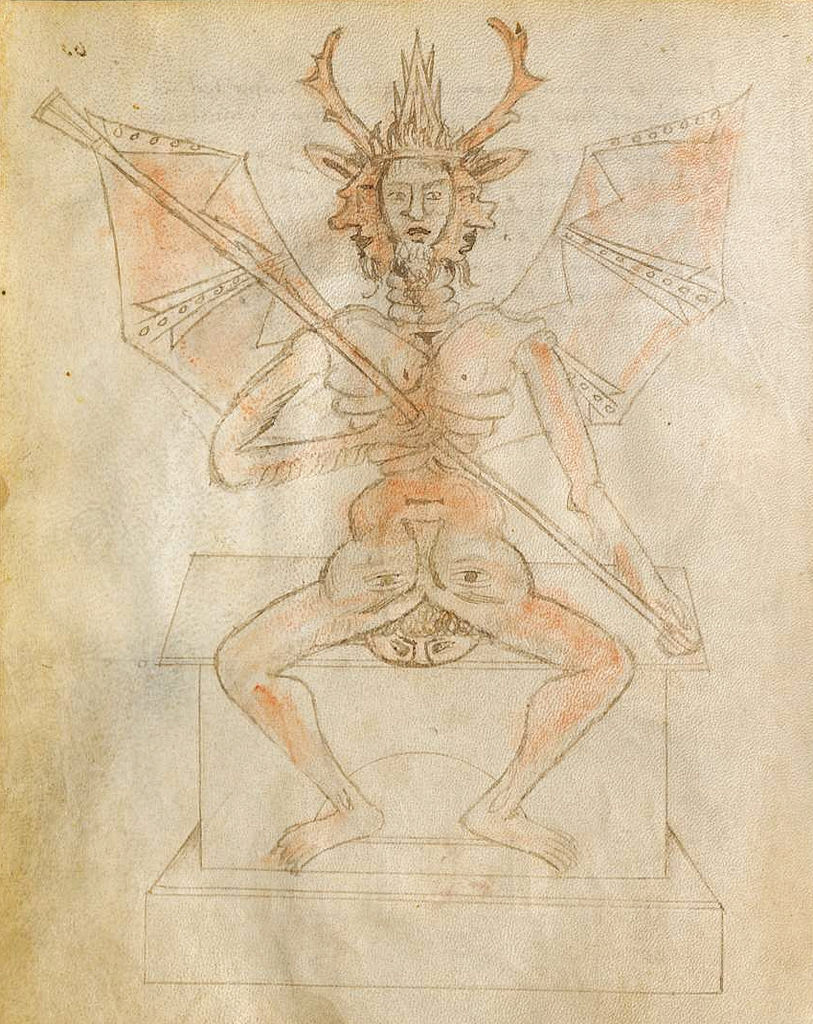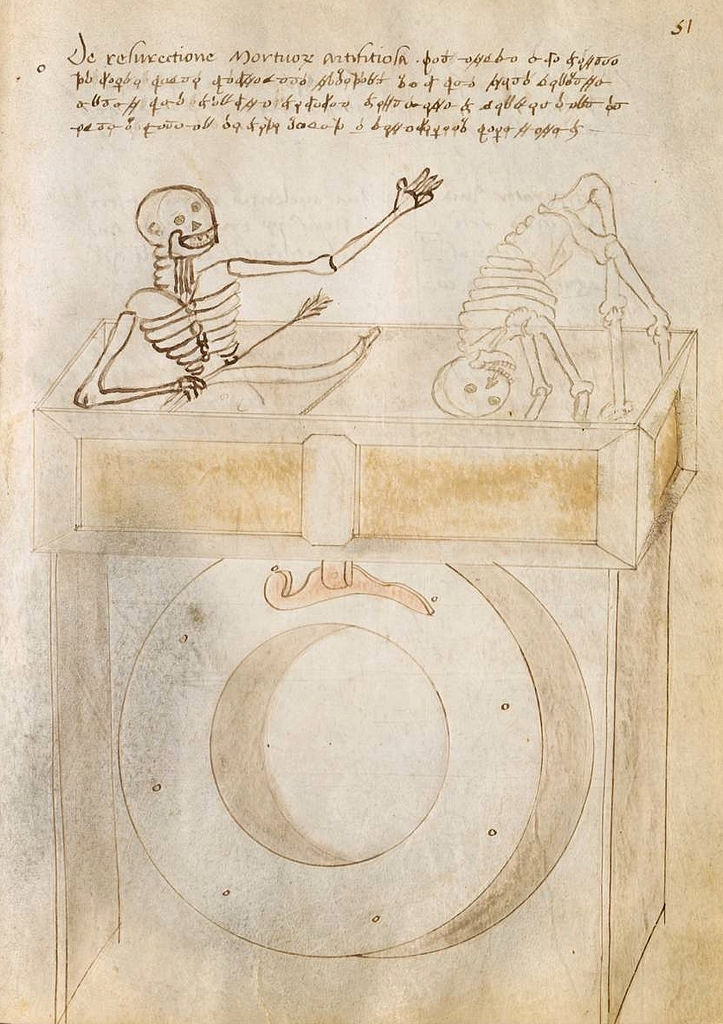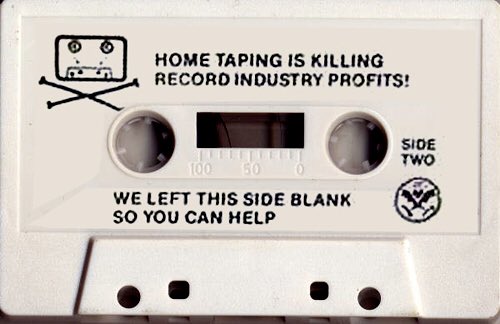[Most Recent Entries] [Calendar View]
Friday, April 5th, 2019
| Time | Event |
| 8:00a | An Animated History of Dogs, Inspired by Keith Haring That quivering teacup Chihuahua… The long-suffering Labrador whose child-friendly reputation has led to a lifetime of ear tugging and tail pulling… The wheezing French bulldog, whose owner has outfitted with a full wardrobe of hoodies, tutus, rain slickers, and pajamas… All descended from wolves. As anthropologist and science educator David Ian Howe explains in the animated TED-Ed lesson, A Brief History of Dogs, above, at first glance, canis lupus seemed an unlikely choice for man’s best friend. For one thing, the two were in direct competition for elk, reindeer, bison, and other tasty prey wandering Eurasia during the Pleistocene Epoch. Though both hunted in groups, running their prey to the point of exhaustion, only one roasted their kills, creating tantalizing aromas that drew bolder wolves ever-closer to the human camps. The ones who willingly dialed down their wolfishness, making themselves useful as companions, security guards and hunting buddies, were rewarded come suppertime. Eventually, this mutually beneficial tail wagging became full on domestication, the first such animal to come under the human yoke. The intense focus on purebreds didn't really become a thing until the Victorians began hosting dog shows. The push to identify and promote breed-specific characteristics often came at a cost to the animals’ wellbeing, as Neil Pemberton and Michael Worboys point out in BBC History Magazine: …the improvement of breeds towards ‘perfection’ was controversial. While there was approval for the greater regularity of type, many fanciers complained that standards were being set on arbitrary, largely aesthetic grounds by enthusiasts in specialist clubs, without concern for utility or the health of the animal. This meant that breeds were changing, and not always for the better. For example, the modern St Bernard was said to be a beautiful animal, but would be useless in Alpine rescue work. Cat-fanciers, rest assured that the opposition received fair and equal coverage in a feline-centric TED-Ed lesson, published earlier this year. And while we applaud TED-Ed for sparking our curiosity with its “Brief History of” series, covering topics as far ranging as cheese, numerical systems, goths, video games, and tea, surely we are not the only ones wondering why the late artist Keith Haring isn’t thanked or name checked in the credits? Every canine-shaped image in this animation is clearly descended from his iconic barking dog. While we can’t explain the omission, we can direct readers toward Jon Nelson’s great analysis of Haring’s relationship with dogs in Get Leashed: They’re symbolic of unanswered questions, prevalent in the 80s: “Can I do this?” “Is this right?” “What are you doing?” “What is happening?” Dogs stand by people, barking or dancing along, sometimes in precarious scenarios, even involved in some of Haring’s explicitly sexual work. Dogs are neither approving nor disapproving of what people do in the images; their mouth angle is neutral or even happy. In some cases, human bodies wear a dog’s head, possibly stating that we know only our own enjoyment, unaware, like a dog, of life’s next stage or the consequences of our actions. Visit Ethnocynology, David Ian Howe’s Instagram page about the ancient relationship between humans and dogs. Related Content: An Animated History of Cats: How Over 10,000 Years the Cat Went from Wild Predator to Sofa Sidekick Discover David Lynch’s Bizarre & Minimalist Comic Strip, The Angriest Dog in the World (1983-1992) Photos of Famous Writers (and Rockers) with their Dogs Ayun Halliday is an author, illustrator, theater maker and Chief Primatologist of the East Village Inky zine. Join her in New York City April 15 for the next installment of her book-based variety show, Necromancers of the Public Domain. Follow her @AyunHalliday. An Animated History of Dogs, Inspired by Keith Haring is a post from: Open Culture. Follow us on Facebook, Twitter, and Google Plus, or get our Daily Email. And don't miss our big collections of Free Online Courses, Free Online Movies, Free eBooks, Free Audio Books, Free Foreign Language Lessons, and MOOCs. |
| 11:00a | The Fantastical Sketchbook of a Medieval Inventor: See Designs for Flamethrowers, Mechanical Camels & More (Circa 1415)
History remembers, and will likely never forget, the name of Renaissance Italian inventor Leonardo da Vinci. But what about the name of Renaissance Italian inventor Johannes de Fontana? Though he came along a couple of generations before Leonardo, Johannes de Fontana, also known as Giovanni Fontana, seems to have had no less fertile an imagination. Where Leonardo came up with everything from musical instruments to hydraulic pumps to war machines to self-supporting bridges, Fontana's inventions include "fire-breathing automatons, pulley-powered angels, and the earliest surviving drawing of a magic lantern device."
Those words come from Portland State University's Bennett Gilbert, who takes a dive into Fontana's notebook of "designs for a variety of fantastic and often impossible inventions" at the Public Domain Review. Filled some time between the years 1415 and 1420, its 68 drawings meant to entice potential patrons include plans for "mechanical camels for entertaining children, mysterious locks to guard treasure, flame-throwing contraptions to terrorize the defenders of besieged cities, huge fountains, musical instruments, actors’ masks, and many other wonders."
It would seem that Fontana lacked the sense of practicality possessed by his successor Leonardo — and Leonardo dreamed up not just a variety of flying machines but a mechanical knight. That may have to do with the era in which Fontana lived, "more than two hundred years before the discoveries of Newton," a time "of transition from medieval knowledge of the world to that of the Renaissance, which many now regard as the origin of early modern science." And so his designs, many of them liberally decorated with unearthly-looking creatures and bursts of flame, strike us today as at most half plausible and at least half fantastical.
Fontana's drawing style, too, reflects the state of human knowledge in the early fifteenth century: "The towers and rockets, water and fire, nozzles and pipes, pulleys and ropes, gears and grapples, wheels and beams, and grids and spheres that were an engineer’s occupation at the dawn of the Renaissance fill Fontana’s sketchbook. His way of illustrating his ideas, however, is distinctly medieval, lacking perspective and using a limited array of angles for displaying machine works." Yet this makes Fontana's notebook all the more fascinating to 21st-century eyes, and throws into contrast some of his more plausible inventions, such as "a magic lantern device, which transformed the light of fire into emotive display."
Will some bold scholar of the early Renaissance one day argue that Fontana invented motion pictures? But perhaps the man who designed "an awe-inspiring fire-illuminated spectacle, most likely serving as a propaganda machine, for use in war and in peace" wouldn't approve of a medium quite so ordinary. We might say that the most valuable legacy of Johannes de Fontana, more so than any of his inventions themselves, is the glimpse his notebook gives us into the the human imagination in his day, when fact and fantasy intermingled as they will never do again. And in the case of some technologies, we should probably feel relieved that they won't: Fontana's "life support system for patients undergoing gruesome surgeries" may be fascinating, but I can't say I'd be eager to make use of it myself.
See his manuscript online here. Related Content: Leonardo da Vinci’s Visionary Notebooks Now Online: Browse 570 Digitized Pages Leonardo da Vinci Draws Designs of Future War Machines: Tanks, Machine Guns & More Buckminster Fuller Creates Striking Posters of His Own Inventions Mark Twain’s Patented Inventions for Bra Straps and Other Everyday Items The 10 Commandments of Chind?gu, the Japanese Art of Creating Unusually Useless Inventions Based in Seoul, Colin Marshall writes and broadcasts on cities, language, and culture. His projects include the book The Stateless City: a Walk through 21st-Century Los Angeles and the video series The City in Cinema. Follow him on Twitter at @colinmarshall or on Facebook. The Fantastical Sketchbook of a Medieval Inventor: See Designs for Flamethrowers, Mechanical Camels & More (Circa 1415) is a post from: Open Culture. Follow us on Facebook, Twitter, and Google Plus, or get our Daily Email. And don't miss our big collections of Free Online Courses, Free Online Movies, Free eBooks, Free Audio Books, Free Foreign Language Lessons, and MOOCs. |
| 2:00p | Home Taping Is Killing Music: When the Music Industry Waged War on the Cassette Tape in the 1980s, and Punk Bands Fought Back
The first time I saw the infamous Skullcassette-and-Bones logo was on holiday in the UK and purchased the very un-punky Chariots of Fire soundtrack. It was on the inner sleeve. “Home Taping Is Killing Music” it proclaimed. It was? I asked myself. “And it’s illegal” a subhead added. It is? I also asked myself. (Ironically, this was a few months before I came into possession of my first combination turntable-cassette deck.) Ten years and racks and racks of homemade cassette dubs on my shelves later, music seemed to be doing very well. (Later, by going digital, the music industry killed itself, and I had absolutely nothing to do with it.) British record collectors will no doubt remember this campaign that started in 1981, another business-backed "moral" panic. And funnily enough it had nothing to do with dubbing vinyl. Instead, the British Phonographic Industry (BPI) were taking aim at people who were recording songs off the radio instead of purchasing records. With the rise of the cassette tape in popularity, the BPI saw pounds and pence leaving their pockets. Now, figuring out lost profits from home taping could be a fools’ errand, but let’s focus on the “illegal” part. Technically, this is true. Radio stations pay licensing fees to play music, so a consumer taping that song off the radio is infringing on the song’s copyright. Britain has very different “fair use” laws than America. In addition, digital radio and a clearer signals have complicated matters over the years. In practice, however, the whole thing was bunkum. Radio recordings are historic. Mixtapes are culture. I have my tapes of John Peel’s BBC shows, which I recorded for the music. Now, I listen to them for Peel’s intros and outros. Seriously, the Napalm Death Peel Sessions *only* make sense with his commentary. Whoever taped this is an unknown legend: The post-punk crowd knew the campaign was bunkum too. Malcolm McLaren, always the provocateur, released Bow Wow Wow’s cassette-only-single C-30 C-60 C-90 Go with a blank B-side that urged consumers to record their own music. EMI quickly dropped the band. The Dead Kennedys also repeated the black b-side gimmick with In God We Trust, Inc. (I would be interested in anybody who picks up a copy used of either to see what *is* on the b-side). And then there were the parodies. The metal group Venom used “Home Taping Is Killing Music; So Are Venom” on an album; Peter Principle offered “Home Taping Is Making Music”: Billy Bragg kept it Marxist: “Capitalism is killing music - pay no more than £4.99 for this record”. For the industry, music was the product; for the regular folks, music was communication, it was art, it was a language. The campaign never did much damage. Attempts to levy a tax on blank cassettes didn’t get traction in the UK. And BPI’s director general John Deacon was frustrated that record companies didn’t want to splash the Jolly Roger on inner sleeves. The logo lives on, however, as part of torrent site Pirate Bay's sails: Just after the hysteria died down, compact discs began their rise, planting the seeds for the digital revolution, the mp3, file sharing, and now streaming. (Wait, is it possible to record internet streams? Why, yes.) If you have any stories about how you helped “kill music” by recording your favorite DJs, confess your crimes in the comments. Related Content: 2,000+ Cassettes from the Allen Ginsberg Audio Collection Now Streaming Online Ted Mills is a freelance writer on the arts who currently hosts the artist interview-based FunkZone Podcast and is the producer of KCRW's Curious Coast. You can also follow him on Twitter at @tedmills, read his other arts writing at tedmills.com and/or watch his films here. Home Taping Is Killing Music: When the Music Industry Waged War on the Cassette Tape in the 1980s, and Punk Bands Fought Back is a post from: Open Culture. Follow us on Facebook, Twitter, and Google Plus, or get our Daily Email. And don't miss our big collections of Free Online Courses, Free Online Movies, Free eBooks, Free Audio Books, Free Foreign Language Lessons, and MOOCs. |
| << Previous Day |
2019/04/05 [Calendar] |
Next Day >> |

